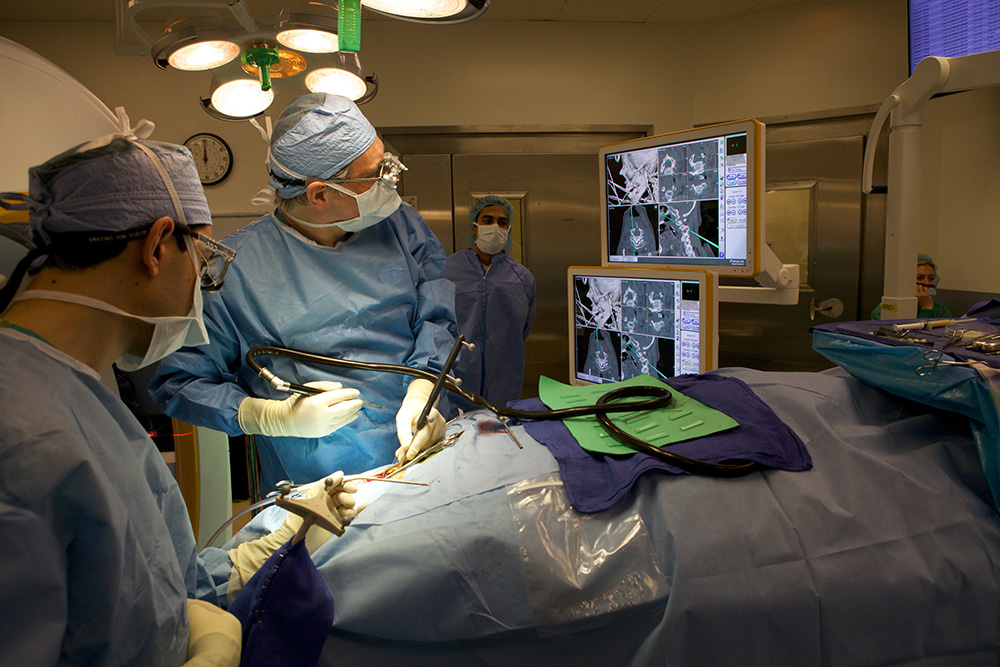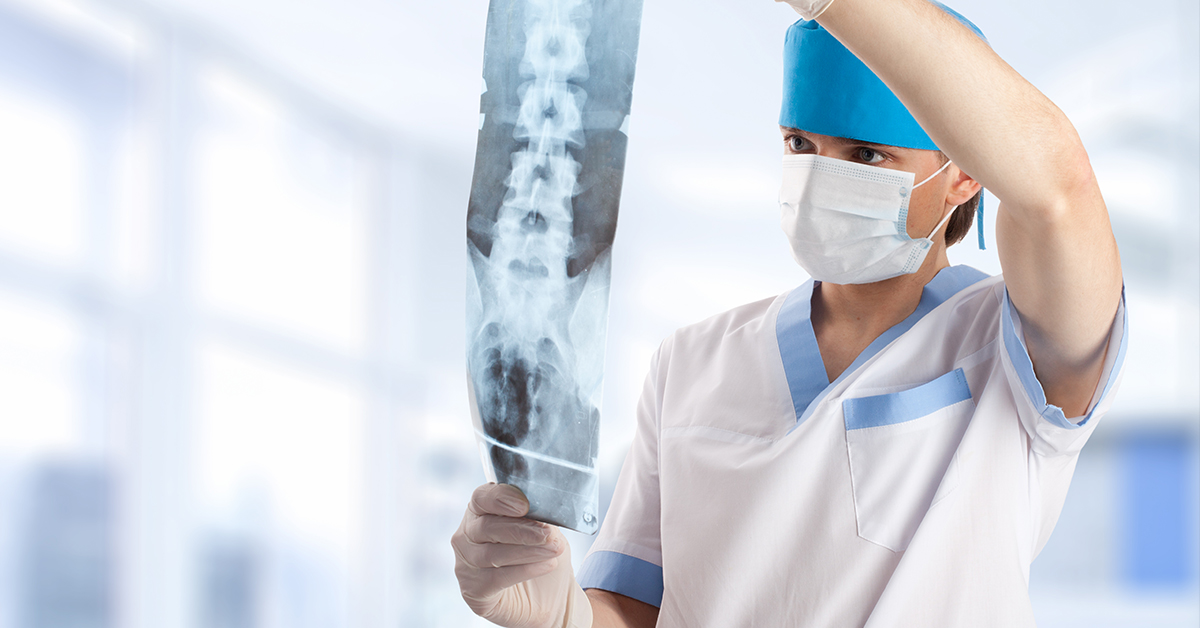An Overview of Spine Problems That Often Lead To Surgical Treatments
Spine conditions such as herniated discs, spinal constriction, and degenerative disc condition regularly necessitate medical interventions when traditional treatments fail to relieve relentless symptoms. Comprehending the subtleties of each condition and the equivalent surgical alternatives, such as discectomy or back blend, is crucial for efficient management.
Herniated Discs
Although lots of people with herniated discs might find alleviation via conventional treatments, surgery ends up being an essential factor to consider when signs and symptoms intensify or continue - best spine surgeons in st louis mo. A herniated disc occurs when the soft internal gel of a back disc sticks out with its external layer, potentially leading and compressing neighboring nerves to discomfort, feeling numb, or weak point in the extremities
Conventional monitoring generally consists of physical treatment, discomfort medications, and corticosteroid injections, which aim to decrease swelling and enhance function. Nevertheless, in cases where these approaches fail to relieve incapacitating signs, surgical alternatives might be explored.
One of the most typical medical treatment for herniated discs is a discectomy, which involves the removal of the herniated part of the disc to ease pressure on the affected nerve root. In a lot more serious cases, spine combination may be needed to stabilize the influenced vertebrae.
Patients are suggested to talk about the possible threats and benefits of surgery with their healthcare supplier to make an educated choice. Inevitably, the goal of any kind of surgical intervention is to bring back function, reduce pain, and boost overall lifestyle for individuals dealing with herniated discs.
Spine Constriction
Spinal constriction occurs when the rooms within the spine slim, causing boosted pressure on the spine and nerves. This condition can create in different areas of the spinal column, including the cervical and back areas, frequently as a result of age-related modifications, such as degenerative disc illness, arthritis, or thickening of ligaments.
Individuals with spinal stenosis might provide with symptoms that include discomfort, numbness, prickling, or weakness, mainly in the legs or arms. These symptoms can be aggravated by activities that include standing or strolling, typically leading individuals to seek alleviation via traditional therapies like physical therapy, drugs, or epidural steroid injections.
However, when these non-surgical interventions stop working to supply appropriate alleviation, surgical alternatives may be taken into consideration. Typical medical procedures for spinal stenosis consist of laminectomy, which includes the elimination of part of the vertebra to reduce stress, and spinal combination, which maintains the damaged location.
Spondylolisthesis
Spondylolisthesis happens when one vertebra slides ahead over one more, bring about imbalance of the spinal column. This problem can arise from numerous elements, including congenital flaws, injury, or degenerative changes in the spinal column. It is most typically observed in the back area, especially at the L4-L5 and L5-S1 degrees.

Treatment choices differ based on the intensity of the slippage and the signs presented. Conservative actions, including physical therapy, pain administration, and task alteration, are typically the initial line of protection. When non-surgical approaches fail to soothe signs or when considerable nerve compression is existing, surgical intervention may be called for. Surgical alternatives can consist of back blend or decompression procedures, aimed at recovering alignment and reducing neurological symptoms. Early diagnosis and proper click resources monitoring are vital for optimum results in patients with spondylolisthesis.
Degenerative Disc Illness

Patients with DDD frequently experience pain that may radiate to the arms or legs, depending on the affected area of the spinal column. The problem can be identified with a mix of clinical examination, imaging research studies, and individual background. Treatment choices generally begin with traditional actions, consisting of physical treatment, discomfort monitoring, and way of life modifications. When these strategies stop working to supply sufficient relief, medical interventions may be taken into consideration.
Surgical alternatives for DDD might consist of back combination or fabricated disc substitute, targeted more tips here at stabilizing the influenced sector and easing discomfort (best spine surgeons in st louis mo). Eventually, the choice of treatment is embellished, taking right into account the severity of the problem, client health and wellness, and way moved here of living variables
Spinal Growths

What elements add to the growth of growths within the spinal column, and exactly how do they materialize in clients? Spinal lumps can emerge from numerous factors, consisting of hereditary tendency, environmental impacts, and pre-existing medical problems. They can be classified as main tumors, coming from the back, or additional lumps, which spread out from various other areas of the body. People might provide with a variety of symptoms, including local discomfort, neurological deficits, weak point, or adjustments in digestive tract and bladder function, depending upon the growth's dimension and location.
Medical diagnosis typically involves imaging researches such as MRI or CT checks, which assist delineate the lump's features and effect on bordering frameworks. In assessing therapy alternatives, the growth's grade, type, and location are vital considerations. Surgical treatment may be necessitated to minimize signs, get a biopsy, or get rid of the lump entirely. The objective of surgical procedure is commonly to decompress neural aspects and maintain the spinal column. Adjuvant treatments, consisting of radiation or chemotherapy, might additionally be necessary depending upon the tumor's nature. Early discovery and intervention are essential for maximizing outcomes in patients with back lumps.
Final Thought
In summary, spine conditions such as herniated discs, spinal stenosis, spondylolisthesis, degenerative disc condition, and back growths often demand medical intervention as a result of their prospective to cause considerable discomfort and practical problems. While conservative treatments may supply temporary alleviation, surgical choices end up being important when signs linger or intensify. Timely medical diagnosis and intervention play a crucial function in recovering feature and improving the lifestyle for afflicted individuals, underscoring the value of detailed spine care.
